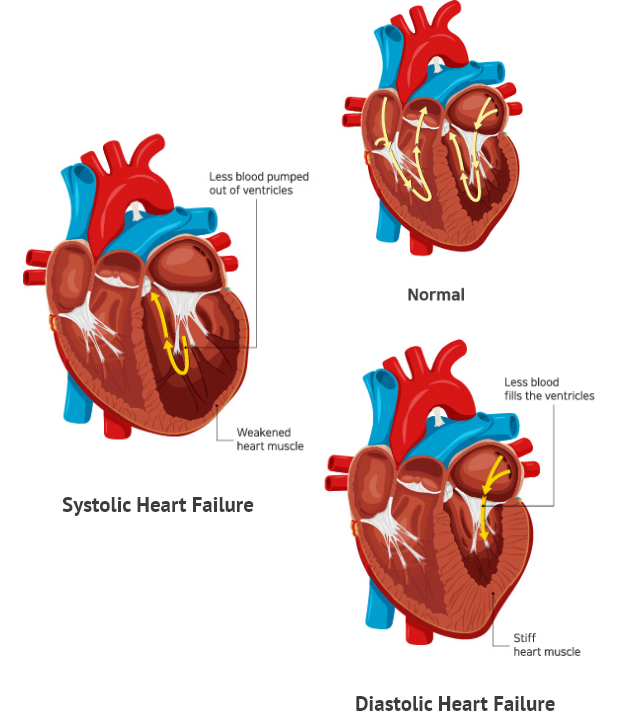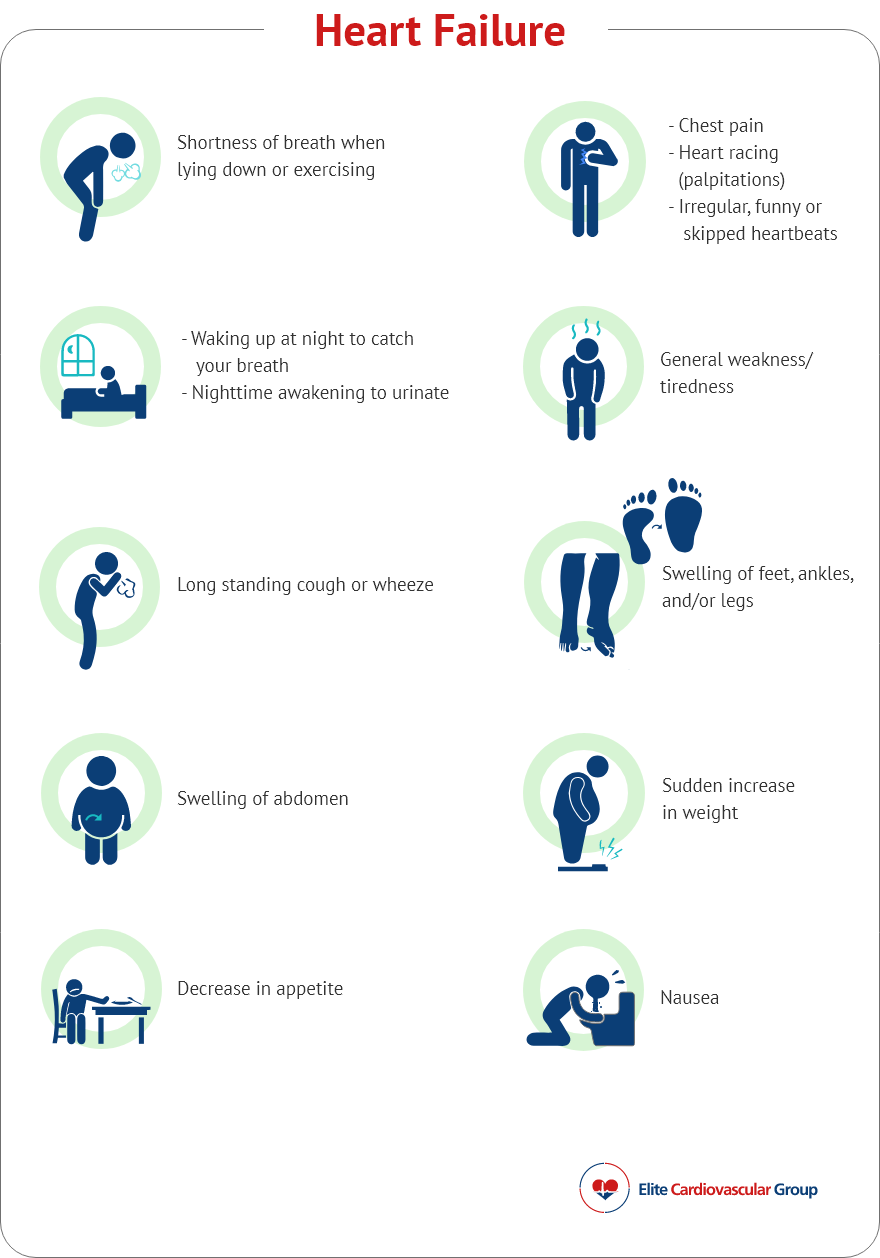Heart Failure

Also known as: Congestive Heart Failure (CHF)
The word heart failure is commonly mistaken for “a heart that stops working.”
In medicine, heart failure means that the muscles of the heart are not pumping at their full capacity. It can occur when the heart muscle becomes too weak or damaged, too rigid, or too loose.
The main problem is that the blood cannot be pushed out properly. The heart tries to compensate by overworking but eventually, it cannot keep up. This results in blood being trapped in the heart and the oxygen and essential nutrients that are supposed to reach the various organs of the body are not delivered properly.
Left Heart failure – occurs when the left side of the heart cannot work at full capacity to push blood out to the rest of the body. This causes blood to be backed up and fluid to be built up in the lungs.
- Systolic failure (also known as heart failure with reduced ejection fraction or HFrEF) – occurs when the left ventricle cannot pump well (weak squeeze) indicated on an echo which shows a reduced ejection fraction, which is a measurement of the heart’s squeeze function. Normal ejection fraction should be about 55% to 65%.
- Diastolic failure (also known as heart failure with preserved ejection fraction or HFpEF) – occurs when the left ventricle cannot relax properly (stiff heart). It’s often caused by long standing high blood pressure. This causes increased muscle thickness and prevents the heart from relaxing properly. Finally, this reduces the amount of blood that can be pumped to the body.
Right Heart failure – most commonly occurs as a result of left heart failure but can also be caused by other diseases such as lung diseases like COPD. This causes blood to be backed up and fluid to build up in the feet, ankles, legs & abdomen.
- Coronary Artery Disease (CAD)
- Any conditions causing damage to the heart muscle
- Previous or recent heart attacks
- Myocarditis (inflammation of the heart)
- Cardiomyopathy (stretching out of heart)
- Alcohol abuse
- Certain medications like for cancer treatment
- High blood pressure (hypertension)
- Diabetes
- Obesity
- Kidney Disease
- Long standing or severe lung disease
- Disease or defects of the heart valves
- Abnormal heart beats (arrhythmias)
- Sleep Apnea (sudden stoppage of breathing when one is sleeping)
- Birth defects of the heart
- Others:
- Severe anemia
- Hyperthyroidism
- Autoimmune

Note: Not everyone may experience all symptoms. Some might not experience any symptoms.
Show references
Ziaeian B, Fonarow GC. Epidemiology and aetiology of heart failure. Nat Rev Cardiol. 2016;13(6):368-378. doi:10.1038/nrcardio.2016.25
Ho KK, Pinsky JL, Kannel WB, Levy D. The epidemiology of heart failure: the Framingham Study. J Am Coll Cardiol. 1993 Oct;22(4 Suppl A):6A-13A. doi: 10.1016/0735-1097(93)90455-a. PMID: 8376698.
Inamdar AA, Inamdar AC. Heart Failure: Diagnosis, Management and Utilization. J Clin Med. 2016;5(7):62. Published 2016 Jun 29. doi:10.3390/jcm5070062
Wong CM, Hawkins NM, Jhund PS, et al. Clinical characteristics and outcomes of young and very young adults with heart failure: The CHARM programme (Candesartan in Heart Failure Assessment of Reduction in Mortality and Morbidity). J Am Coll Cardiol. 2013;62(20):1845-1854. doi:10.1016/j.jacc.2013.05.072
Arrigo M, Huber LC, Winnik S, et al. Right Ventricular Failure: Pathophysiology, Diagnosis and Treatment. Card Fail Rev. 2019;5(3):140-146. Published 2019 Nov 4. doi:10.15420/cfr.2019.15.2
Rosenkranz S, Gibbs JS, Wachter R, De Marco T, Vonk-Noordegraaf A, Vachiéry JL. Left ventricular heart failure and pulmonary hypertension. Eur Heart J. 2016;37(12):942-954. doi:10.1093/eurheartj/ehv512
Ohte N, Little WC. Statins beneficial for heart failure with preserved ejection fraction but not heart failure with reduced ejection fraction? Circ J. 2015;79(3):508-9. doi: 10.1253/circj.CJ-15-0016. Epub 2015 Feb 2. PMID: 25746528.
Brunner-La Rocca HP, Sanders-van Wijk S. Natriuretic Peptides in Chronic Heart Failure. Card Fail Rev. 2019;5(1):44-49. doi:10.15420/cfr.2018.26.1
